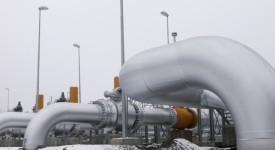The European Central Bank (ECB) predicts better times for the Eurozone economies with both inflation and growth rate going up in the upcoming years. This positive economic impetus is thought to be a result of both ECB’s quantitative easing program and other factors. While inflation is still believed to continue falling by the end of this year due to cheap oil, it should rebound in 2016. ECB’s regular quarterly survey forecasts that inflation will be around 0.1 percent by December, with 1.2 percent in 2016, while in 2017 it should reach up to 1.6 percent, which is close to the bank’s target rate of 2 percent.
This year’s inflation forecast is a downward revision of the previous estimates but forecasts for 2016 and 2017 have been revised upwards. The ECB explained that “the downward revision for 2015 mainly reflected lower oil prices, whereas monetary policy measures and exchange rate developments have resulted in upward revisions for 2016 and 2017”. When it comes to economic growth, the original predictions were revised upwards. The ECB expects real growth of gross domestic product (GDP) at 1.4 percent this year, 1.7 percent in 2016 and 1.8 percent in 2017.
ECB President Mario Draghi commented that these positive forecasts are a result of a variety of ECB policies including bond-purchasing program worth 1.1 trillion euros. “The upward revisions were often explained by the low oil prices, which is expected to contribute positively to private consumption as a result of higher disposable income in households, as well as to company investment as a result of improved margins owing to lower production costs,” the ECB further clarified. In addition to extensive policy measures, the lower exchange rate for the euro is also expected to boost exports. All of these developments have already begun to yield first fruits – the market sentiment is improving and businesses and consumers are getting more confident.







